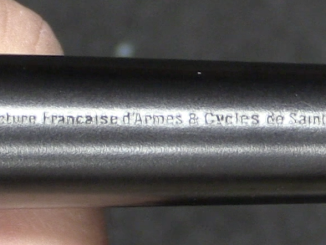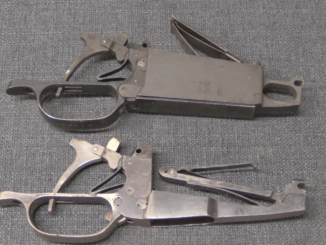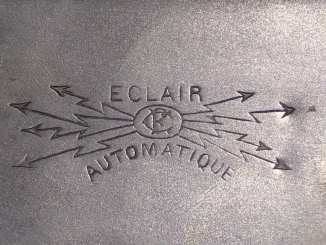The Order of St John – the Knights of Malta – began as an order to protect Christian pilgrims on the road to Jerusalem, but transformed into an organization dedicated to corsairing in the Mediterranean Sea. Basically, legally justified pirates. For about 300 years they were based on the island of Malta, and while they produced their own cannons there, they purchased small arms from mainland Europe.
Today, we are looking at guns from the last major order placed by the…Order. In addition to muskets, it included 2000 flintlock handguns of the French Modele 1733 pattern. Part of the order was for long barreled (300mm) individual pistols, and part was for pairs of shorter barreled (240mm) ones. These were for both naval and cavalry forces, although it remains unclear which service received which type. However, the two different models have distinctly different acceptance marks.
In 1798, Napoleon’s fleet captured Malta, and these pistols (along with many other arms) fell into French hands, where they were easily absorbed into the armed forces, being identical to a French standard pattern. The fleet was very shortly thereafter defeated by the British, and control of Malta and these arms went to Great Britain. The long barreled type of Maltese 1733 pistol is particularly rare today, with probably only about 5 surviving. The short barreled ones are more common by a factor of 10 or so, but still very rare all things considered.




“pirates”
In fact, piracy in Mediterranean sea has long tradition, as it was there even in ancient times: https://en.wikipedia.org/wiki/Ancient_Mediterranean_piracy
Interestingly Gaius Iulius Caesar (author of De Bello Gallico book) was once kidnapped for ransom and then: http://www.livius.org/sources/content/plutarch/plutarchs-caesar/caesar-and-the-pirates/
What is remarkable it was English who were more than others inclined to carry on with this activity; the later territory favored by them being Caribbean. They were constant nuisance to Spanish seagoing trade.
https://www.nps.gov/fora/learn/education/piracy-and-privateering-with-elizabethan-maritime-expansion.htm
However, in more general scope, practice of issuing letters of marque was accepted and so you can found privateers fighting for various countries with significant colonies, see list: https://en.wikipedia.org/wiki/List_of_privateers
Great Britain is now associated with colonial rule, however notice that other entities, which are not now so associated also were active in that area, for example Republiek der Zeven Verenigde Provinciën.
Quite like the Romans; all your populace are adopting a “revolutionary” anti Roman religion… What do you do? Adopt it I.e. Become it’s head and water it down, while recouping taxes.
Old adage: If you can’t beat them, join them.
Technically the Order preyed on Ottoman shipping, Ottoman and their associates. This wad an era when Muslim corsairs raided as far a field as England and the American colonies. The Order was a force for European security, not bullying ‘peoples of color’.
I get the message that the video is not available.
Go to Full30, it’s up on that site. Youtube probably blocked it cause of ‘scary guns’.
The web censorship commission has infected the place with “picture perfect world without violence, drugs, or sex” mindset! Can I panic now?! The “society police” want to confiscate my spring-powered pellet guns (even though I don’t have any in working order)!
Disclaimer: this post is not to be taken seriously.
Just wait till next week
So did I this morning, must be problems at the website.
So did I this morning, must be problems at the website.
Me too, now it works no sweat.
Mexican carry in the 1700s. You would probably need a stout sash to support more than one of these, however. I wonder, would the sword be considered the primary weapon? And at what point would you transition to a pistol; if you started to lose the swordfight, or would that be considered dishonorable?
My brother went to Malta ages ago on holiday from England while an exchange student; you’ve made me want to make the trip now, Ian.
What the primary weapon was would depend on the role of the particular person. In the era just prior to the Napoleonic Wars (and at most times for most people) however it was unlikely to have been a pistol.
One set of pistols was for the navy. The navy’s primary weapon of course was the guns of their ships. For boarding actions, shore parties, or just guarding the ships, most navies of that era would have pikes, something similar to a cutlass, and pistols. Pistols would have rather limited usefulness in that environment, but they were used.
For cavalry, it would depend upon the type of cavalry. For dragoons, the primary weapon would be a musket, possibly a shorter one than the infantry used. For lancers it would be a lance. For most heavy and light cavalry it would be some type of sword such as a straight sword or sabre. They may have pistols, but again, they would be of limited use.
For an officer of course, his weapon is neither a sword nor a pistol, it’s his men. His main job was to pay attention to the overall battle about him and direct his men effectively His own weapons were there for him to defend himself should the fighting come to that.
Officers in that era typically had to buy their own equipment, including weapons. I think the real question in this case is whether these pistols were held to be issued to common troopers or sailors, or whether the Order for some reason specific to their structure and origin supplied them to their officers.
Pistol in one hand, sword in the other. Boom your pistol at the first foe to come at you (if it didn’t misfire), then use it to parry in the sword fight that followed. Double-shot your pistol if you trusted its proof, and give great attention to your flint and priming before the fray — if your hands were steady; if not, wait for the rum to go round, and pray to Saint Barbara to lend her aid.
Naval pistols of the day were also used as bludgeons. The butt caps are hard and will smash an opponent’s skull in…
… so one long handled club, and a pair of short handled ones.
I think it is not a “crowned JL with a very small v” but a a “crowned double L”. That was the mark (monogram ?) of French kings Louis 13 to Louis 18. I don’t know what the little “v” isn it may be a honney bee which was part of Louis 15 mark but it is oriented downwards here. Perhaps that gun mark has nothing to do with king Louis X…, there is a book on French gun marks: Jarlier P. Le «Qui est qui» de l’arme en France de 1350 à 1970 that could gives the answer but I don’t have it.
I have just found your piece on the Maltese pistols. I was very interested because it confirmed the identification of my pistol. I would have put some pictures if I could. Although it has the short barrel the mark is the same as shown on the long example.